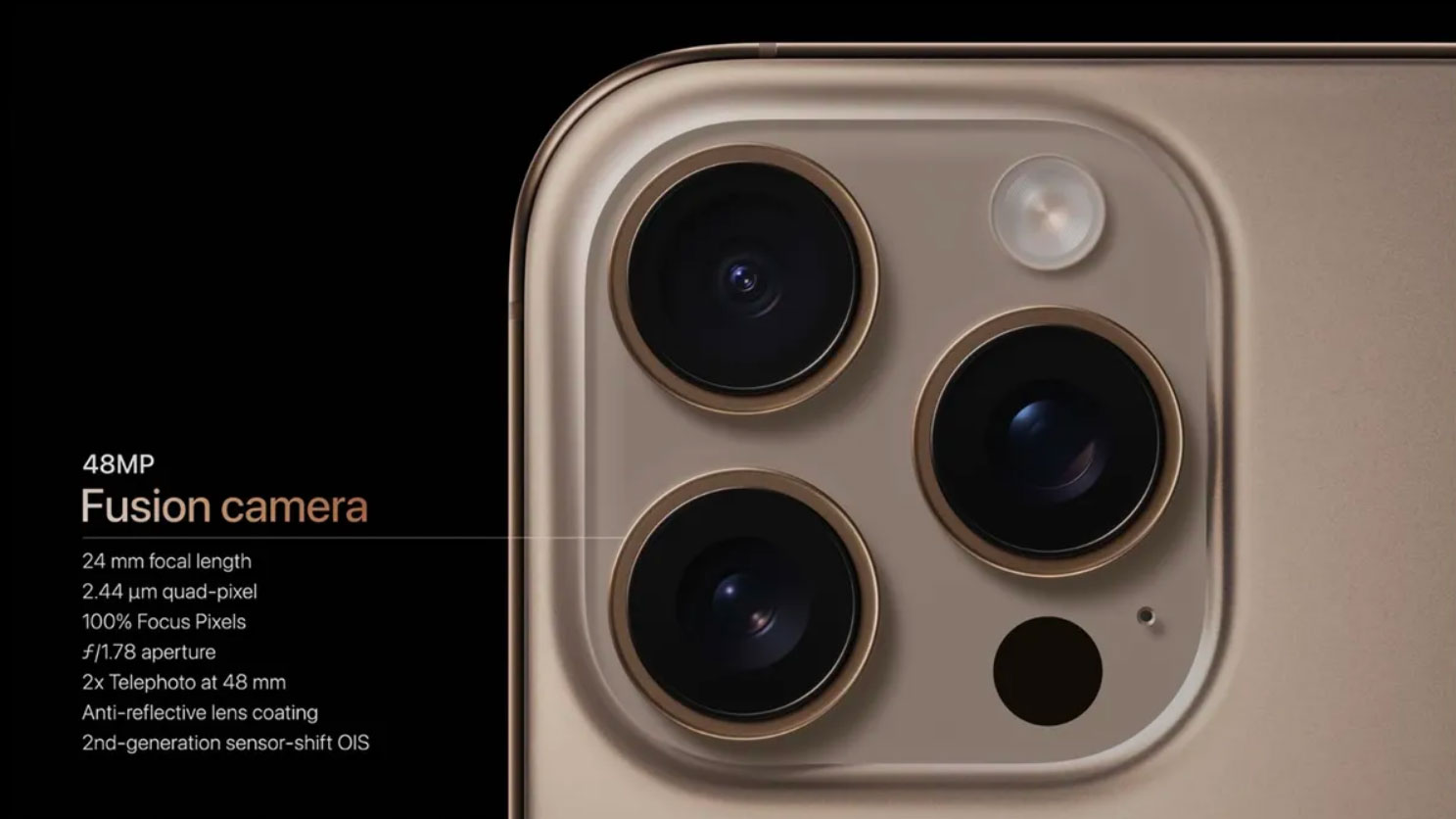Apple Launches new iPhone 16 with 48MP Fusion Camera
With the release of the iPhone 16, Apple has coined a new term for its camera: the 48MP Fusion Camera. While the resolution itself isn’t groundbreaking, as we saw the same 48MP sensor in the iPhone 15, the word “Fusion” has raised eyebrows. So, what’s new with the Fusion Camera, and why is it generating so much attention?
Let’s dive into the tech behind the name and figure out what makes the iPhone 16’s 48MP Fusion Camera stand out.
1. The Cynical Take: Marketing or Meaningful?
One might argue that Apple introduced the term “Fusion” to make the iPhone 16 camera seem more advanced than it actually is, given the similarity in hardware to the iPhone 15. The 48MP sensor isn’t new, and many of the computational photography features have been carried over from previous models. However, despite these similarities, Apple’s use of “Fusion” isn’t entirely marketing fluff. There’s real innovation happening behind the scenes.
2. The Origin of ‘Fusion’: A Historical Perspective
The term Fusion has a history in the world of cameras. For example, James Cameron co-developed the Fusion Camera System to film movies like Avatar in 3D. Similarly, GoPro named its first 360-degree camera Fusion, referring to the blending of two camera feeds into one seamless image.
In both cases, “Fusion” referred to combining different perspectives or feeds to create something more advanced. While the iPhone 16 doesn’t use multiple cameras to stitch images like Cameron’s or GoPro’s systems, Apple’s “Fusion” might be pointing to the way it merges different computational processes to enhance the final output.
3. One Camera, Multiple Personalities
The iPhone 16’s 48MP Fusion Camera is primarily about versatility. The camera can act as a 48MP sensor for high-resolution images, a 12MP camera for everyday shots, and offer 2x zoom without the loss of quality, thanks to sensor cropping.

This versatility is made possible by a sensor technology called Quad Bayer Array, where each pixel of the image is created from four smaller photosites that gather light and color data.
- In bright conditions, the iPhone 16 can take full 48MP images, making use of all the available data points.
- In low-light conditions, it switches to pixel binning, combining four photosites into one pixel to gather more light, resulting in better images even in challenging environments.
This ability to shift between modes, while optimizing for lighting conditions and desired zoom levels, is one aspect of the “Fusion” name. Apple’s advanced image processing algorithms work in the background to blend information from the 48MP sensor to produce sharp, vibrant images no matter the situation.
4. Improved Computational Photography
The Fusion Camera also refers to improvements in computational photography, particularly in Deep Fusion technology. Deep Fusion combines multiple exposures from a single shot to create one final image with enhanced detail and clarity. In the iPhone 16, this is enhanced even further by its improved A17 Bionic chip.
The iPhone 16 is capable of capturing 48MP photos but can also deliver images in 24MP mode. This mode blends both lower and higher-resolution captures to offer a balanced mix of detail and file size, an improvement over previous models that offered only the two extremes of 12MP and 48MP.
5. 2x Optical Quality Zoom
Apple claims the iPhone 16 offers 2x zoom with “optical quality” thanks to sensor cropping. While this isn’t true optical zoom (since it doesn’t involve moving lenses), the sheer amount of data gathered by the 48MP sensor allows Apple to crop into the image without losing too much detail.
Although the sensor uses 12MP color data for each shot, the use of advanced demosaicing and denoising algorithms helps it preserve color fidelity and image sharpness even at 2x zoom. This combination of hardware and software processing is another aspect of the “Fusion” concept.
6. Stereo Photography for Spatial Computing
A subtle but important change in the iPhone 16’s design is the rearrangement of its camera lenses. Unlike previous models where the main and ultra-wide cameras were placed diagonally, they are now positioned vertically. This new alignment allows the iPhone 16 to capture stereoscopic images and video, which can be viewed in 3D on Apple’s Vision Pro headset.

This capability, previously limited to the Pro models, makes the iPhone 16 a more compelling option for those looking to explore spatial photography and videography. While Apple hasn’t explicitly linked this to the “Fusion” branding, it does align with the concept of merging different perspectives to create a richer experience, much like Cameron’s 3D Fusion camera system.
7. Same Hardware, Better Performance?
One might question how much of an upgrade the iPhone 16’s camera is over the iPhone 15, especially considering that the sensor hardware appears to be largely the same. The sensor in the iPhone 16 is likely still based on the Sony IMX803, a 1/1.3-inch sensor with 2.44 micron quad-pixels, used in previous iPhone models.
However, the improvements in machine learning and computational photography could lead to real-world improvements. Apple’s increased focus on AI-driven photo processing could result in sharper, more natural images, despite the similarities in hardware.
